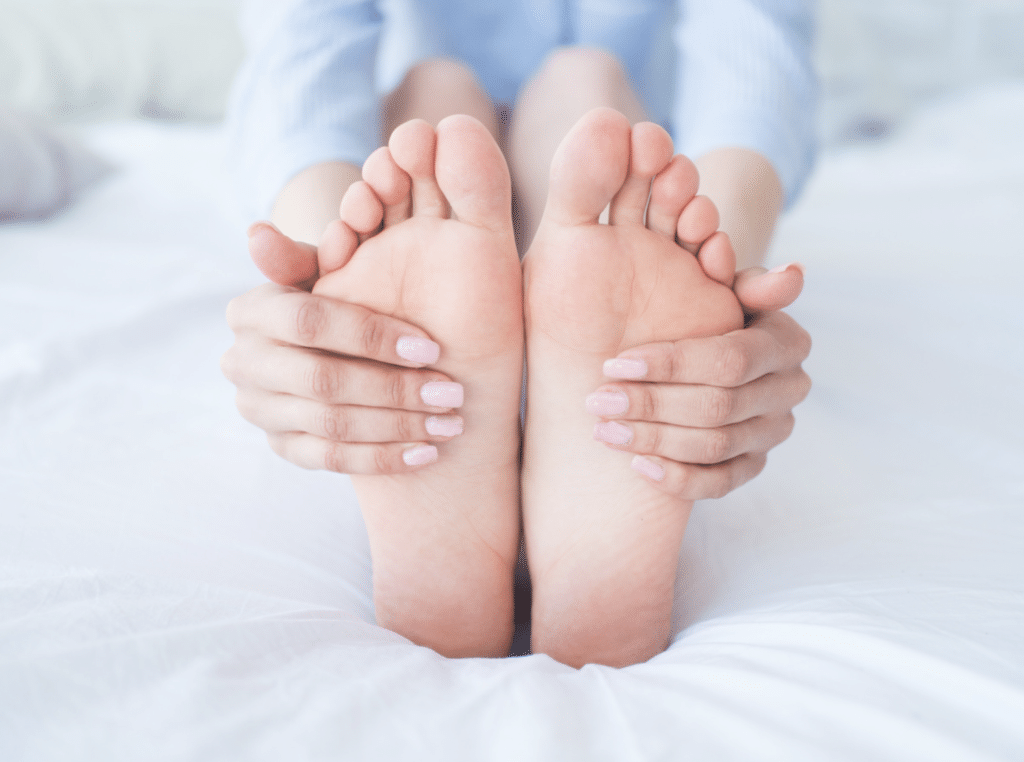Hammertoes are also known as contracted toes. This condition is a type of foot deformity affecting the muscles and ligaments of the second, third and fourth toes, wherein they are bent like a hammer or claw.
According to the American Podiatric Medical Association, hammertoes are more common in women than men. There are two types of hammertoe formation: flexible and rigid. A flexible hammertoe is easily diagnosed and treatable because this condition is still in its developmental stage. A rigid hammertoe, on the other hand, is the more serious type and happens when the patient delays the treatment.
Rigid hammertoes also feel tighter because of joint misalignment that makes the toes immobile. To treat this condition, our foot doctor will ask patients to wear a custom orthotic device to reduce symptoms and prevent the deformity from getting worse. If this doesn’t improve the condition, surgery will be indicated.
Identifying Hammertoes
It’s often easy to identify a hammertoe because of its distinct appearance. Apart from the physical indication, hammertoes come with some degree of pain when patients wear or remove their shoes. Some swelling, redness, open sores, corns and calluses may also be present.
There are many reasons hammertoes develop but the most common include:
- An injury like stubbing, jamming or a broken toe that didn’t heal properly
- A chronic condition like arthritis or diabetes
- Regularly wearing ill-fitting and pointy shoes
- Age and gender
- Genetics
- Having bunions or thick layers of skin due to repeated friction
Treating and Preventing Complications of Hammertoes
Raleigh Orthopaedic Clinic’s podiatrists specialize in foot and ankle conditions. In order to prevent complications, it’s best to seek medical intervention from our experts in foot medicine.
Before determining the best course of treatment, our foot doctor will usually order an X-ray of the affected foot to determine the extent of the deformity. If it’s still in the developing stage, hammertoes may be easily corrected by using shoes that are high and wide across the toes. Patients will also be advised to wear hammertoe pads.
As much as possible, patients must also avoid wearing pointed or narrow shoes, as well as high-heeled shoes that put pressure on the toes and force them forward, according to Harvard Health. Patients are also encouraged to buy or wear shoes that are at least half an inch longer than their longest toe.
If you develop blisters, it’s best not to touch, scrape, or pop these fluid-filled areas of the skin to avoid infection. Instead, you can ask our foot doctor on what creams or ointments can best relieve the pain. Moisturizing the skin can help prevent corns and calluses that form when the skin rubs against the inside surface of a closed shoe.
Soaking the feet in warm water and doing exercises may also help. Exercising the toes can loosen up the muscles and joints and release tension.
Finding the Best Podiatrist in Raleigh, Cary, Garner and Holly Springs
Our podiatrist has many years of experience diagnosing and treating even the most complex foot and ankle conditions for patients of all ages. He works closely with our foot and ankle surgeons to provide patients with conservative treatment options, performing in-office procedures, if necessary.
Find out more about:
- David D. Boone, MD – Foot and Ankle Specialist
- Kevin J. Logel, MD – Foot and Ankle Specialist
- Eric G. Simmons, DPM – Podiatrist
Make an appointment with our podiatrist in Raleigh, Cary, Garner, or Holly Springs today, to get specialized treatment with a personal approach.
The material contained on this site is for informational purposes only and DOES NOT CONSTITUTE THE PROVIDING OF MEDICAL ADVICE, and is not intended to be a substitute for independent professional medical judgment, advice, diagnosis, or treatment. Always seek the advice of your physician or other qualified healthcare providers with any questions or concerns you may have regarding your health.
